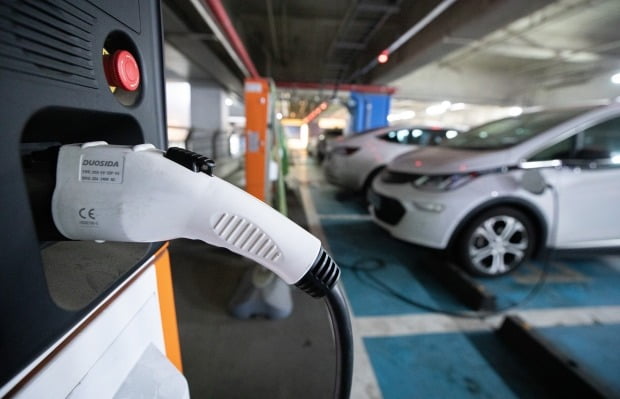
On January 21st, the government announced a subsidy system for eco-friendly vehicles. In January, when the subsidy policy was undecided, electric vehicle sales plummeted. Photo = News 1
In the first month of the new year, the’subsidy gap’ in Korea plunged domestic electric vehicle sales. Although the era of electric vehicles is one step forward, it is evaluated that the influence of subsidies is still enormous.
According to the automobile industry on the 3rd, sales of electric vehicles by automakers fell sharply last month. Eight Hyundai Kona EVs were sold and only one Kia Soul EV was sold. Although Niro EV sales reached 90 units, industry analysts say that supply was delayed in December of last year. Renault Samsung’s electric car Renault Zoe (ZOE) also recorded one, and GM Korea’s Chevrolet Volt was hit with zero.
Tesla, the number one electric car brand, couldn’t escape humiliation. The Kaizu-U Data Institute analyzed that Tesla’s January report card, which sold 11,800 units last year, was only 18 units. The imported car brand ranking, which reached 6th at the end of last year, also fell to 24th. In fact, it was a period of closure.
As a result of this, the number of electric vehicles sold in Korea (based on the KaizuU Data Research Institute) in January was only 615 units, falling more than 80% compared to the previous month (3205 units).
The cause of the sudden electric car sales cliff is the government’s electric car subsidy. On January 21, the government confirmed the amount of subsidies for eco-friendly vehicles this year.
This year, the government subsidy for electric vehicles is up to 8 million won per vehicle, and the amount of subsidy is applied differently depending on the vehicle price range. If the value of the vehicle is less than 60 million won, it is paid in full, and 50% is given for 60 million to 90 million won. If it exceeds 90 million won, the subsidy is not received.

The amount of government subsidies for electric vehicles in 2021. Photo = Korea Economic Daily DB
Local government subsidies are also paid in conjunction with national treasury subsidies. If the government subsidy was received only half of the maximum, the local government subsidy would be given only half. Each local government has been announcing plans to provide subsidies for electric vehicles containing these details from the end of last month.
The city of Seoul will accept applications for subsidies from mid-month. A total of 11,484 vehicles, including 5067 passenger cars, 4,000 motorcycles, 300 taxis, and 117 buses, are eligible for support. The government and municipal expenses are combined to provide a maximum of 11 million won for passengers, 1.8 million won for motorcycles, 18 million won for taxis, and 160 million won for buses.
Gyeonggi-do local governments are also announcing support plans of up to 4 million to 6 million won per passenger this month. In the end, the last month was a period of subsidy gaps where government support could not be received even when purchasing eco-friendly cars.
The automobile industry expects electric vehicle sales to recover from February, when the announcement was made to each local government and subsidies were paid. However, there are voices of concern about the excessive fluctuations in sales volume due to subsidies at the time of full-fledged electric vehicle supply.
An industry insider said, “I realized again that the subsidies have an absolute influence in the electric car market.”
Another official also said, “At the end of last year, various local government budgets were cut off, and government subsidies were also suspended in connection with this,” and said, “It is difficult to sell normally at the beginning and end of the year when subsidies are cut off.” He predicted, “It is unavoidable that the subsidy will be cut off when the budget is dong or the subsidy will be cut off, but a more stable supply will be possible if a method of retroactive support after policy confirmation is introduced for consumers who purchase at the beginning of the year.”
Sesung Oh, reporter of Hankyung.com [email protected]
Article reports and press releases [email protected]
